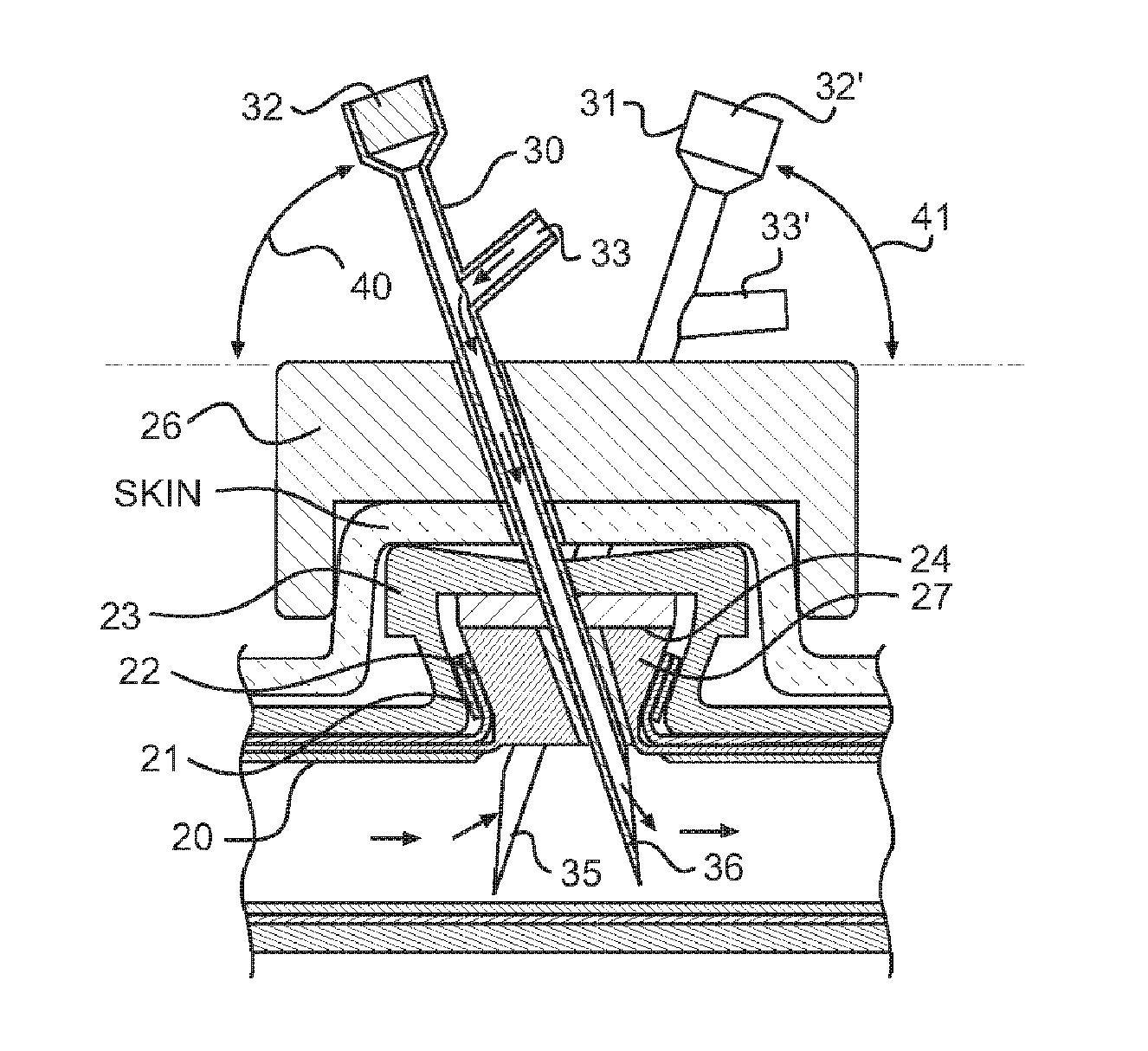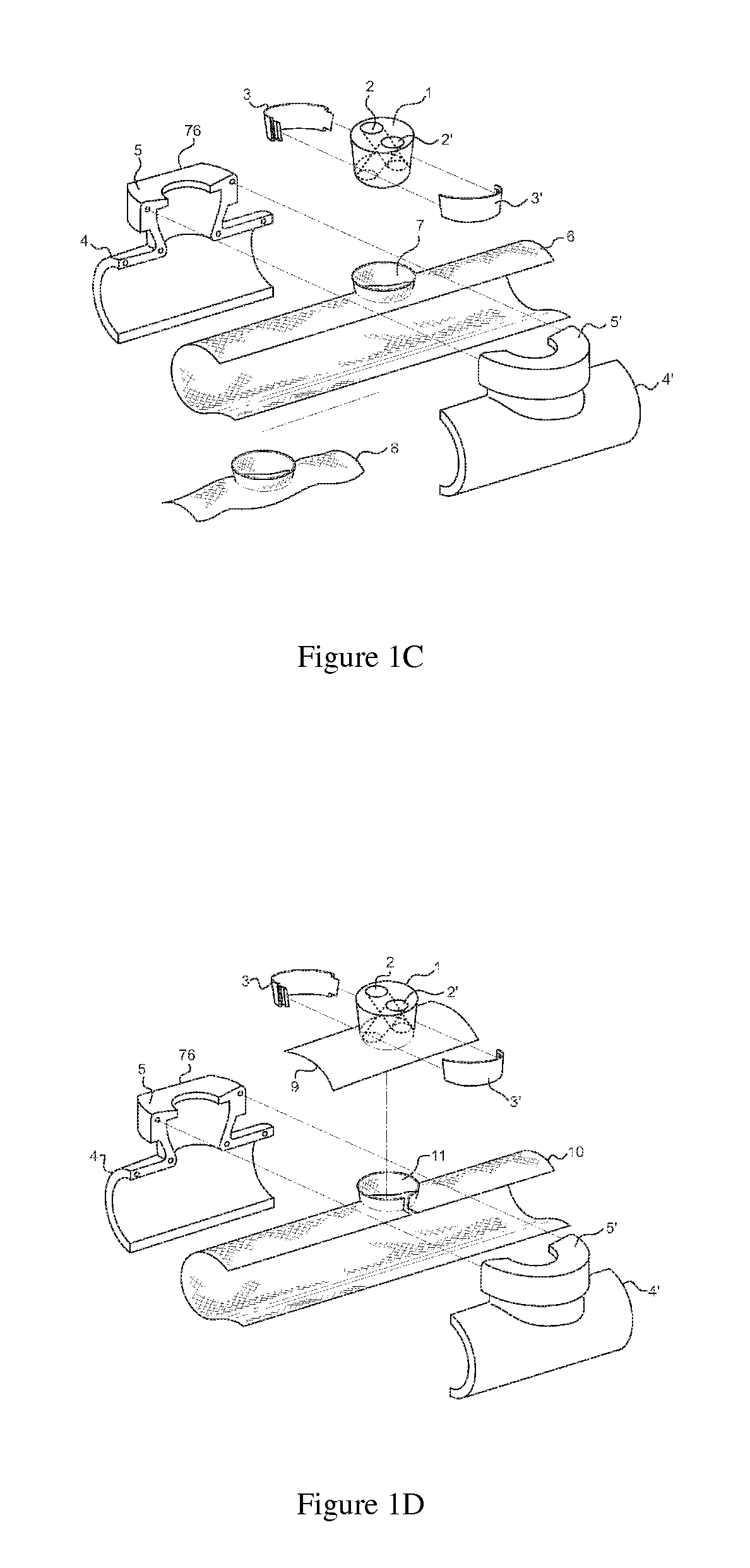Implantable vascular access system
a vascular access system and implantable technology, applied in the field of vascular access ports, can solve the problems of long-term blood access required for applications requiring repeated vascular access, can be problematic, cost about $1 billion, etc., and achieve the effects of facilitating flow, preventing vessel compression, and facilitating flow
- Summary
- Abstract
- Description
- Claims
- Application Information
AI Technical Summary
Benefits of technology
Problems solved by technology
Method used
Image
Examples
Embodiment Construction
[0059]Unless defined otherwise, all technical and scientific terms used herein generally have the same meaning as commonly understood by one of ordinary skill in the relevant art.
[0060]The articles “a” and “an” are used herein to refer to one or to more than one (i.e., to at least one) of the grammatical object of the article. By way of example, “an element” means one element or more than one element.
[0061]The terms “administering,”“administer,”“delivering,”“deliver,”“introducing,” and “introduce” can be used interchangeably to indicate the introduction of a therapeutic or diagnostic agent into the body of a patient in need thereof to treat a disease or condition, and can further mean the introduction of any agent into the body for any purpose.
[0062]A “biocompatible material” is a material that has the ability to interface with living biological tissues with an appropriate host response in any of specific medical systems, methods of treatment or delivery contemplated herein. The bio...
PUM
 Login to View More
Login to View More Abstract
Description
Claims
Application Information
 Login to View More
Login to View More - R&D
- Intellectual Property
- Life Sciences
- Materials
- Tech Scout
- Unparalleled Data Quality
- Higher Quality Content
- 60% Fewer Hallucinations
Browse by: Latest US Patents, China's latest patents, Technical Efficacy Thesaurus, Application Domain, Technology Topic, Popular Technical Reports.
© 2025 PatSnap. All rights reserved.Legal|Privacy policy|Modern Slavery Act Transparency Statement|Sitemap|About US| Contact US: help@patsnap.com



